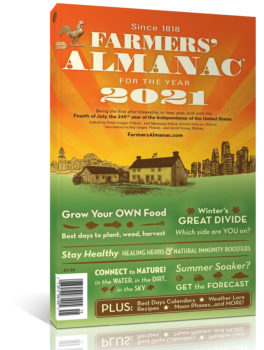
This annual periodical is predicting a “Grand Solar Minimum”-style winter for the United States and Canada this season.
Officially dubbed “Winter of the Great Divide,” the Farmers’ Almanac is anticipating a brutally cold winter for northern, central, and eastern regions, drought in the west, and everything crazy in between.
If you love the cold of winter, you’re going to love our forecast if you live in the northern half of the country, reads a passage from the Farmers’ Almanac website.
Our long-range forecast is calling for a cold winter with below-normal temperatures in areas from the Great Lakes and Midwest, westward through the Northern and Central Plains, and the Rockies.
Areas across the Desert Southwest, (Arizona and southern California), are predicted to experience a dry and generally mild winter.
While right along the Pacific Coastal Plain, from northern California and points north through western portions of Oregon and Washington, rainy and wet weather will be the rule for the winter ahead.
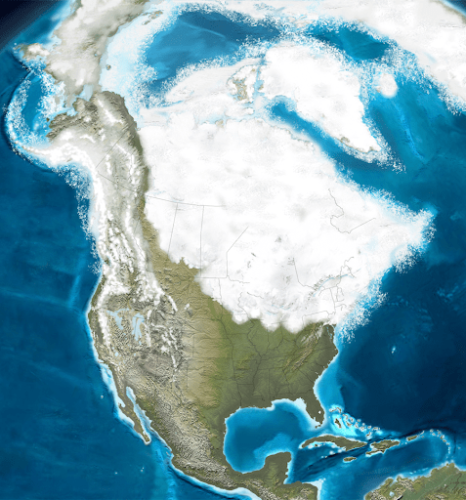
Northern, central, and eastern regions of North America find themselves buffeted by increasingly-intense polar cold during the onset of GSMs as the Arctic encroaches ever-further south, while lower-lying regions to the west are usually spared the worst of the freeze.
This pattern also ties-in with NASA’s Maunder Minimum Reconstruction Map (below), which clearly depicts a western-boundary of deeper blue running diagonally down the North American continent, from west to east–again sparing the west from the worst:
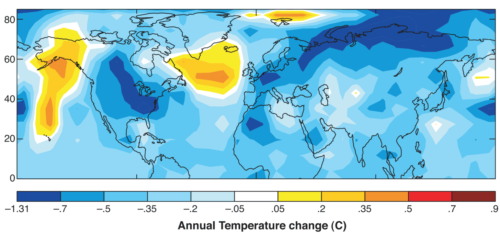
Also worth noting is that while Earth’s overall temperature trends colder during an Ice Age/Grand Solar Minimum, not ALL regions experience the chill.
As with the previous GSM (the Maunder Minimum, 1645-1715), areas like the Arctic, Alaska, and S. Greenland/N. Atlantic actually warm during bouts of otherwise “global” cooling — and this is exactly what we see developing today.
Is the Farmers Almanac 2020-21 preparing us for a bout of global cooling?
It certainly is calling for a brutally cold winter for northern, central, and eastern regions — with a blizzard forecast to deliver 2 feet of snow along the eastern seaboard in mid-February.
If 2020 taught us anything, it’s that you “just never know,” reads the footnotes of the Almanac’s website.
Tellingly, and in addition to predicting the weather, the periodical includes useful advice on ways to raise chickens, boost your immunity, grow food, and also offers tips on how to live an all-round and more self-sufficient life — advice that completely contradicts what’s issued by the powers-that-be who desire total urbanization in order to render us all utterly-dependent on the state, for everything, like a fluffy mass of dutifully herded sheep.
Read rest at ElectroVerse



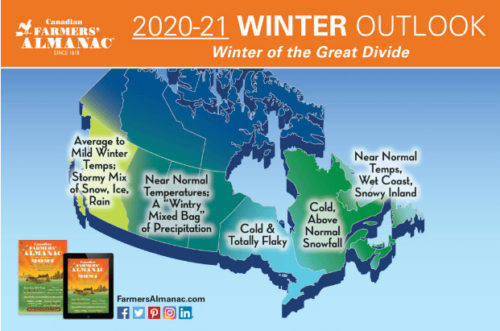


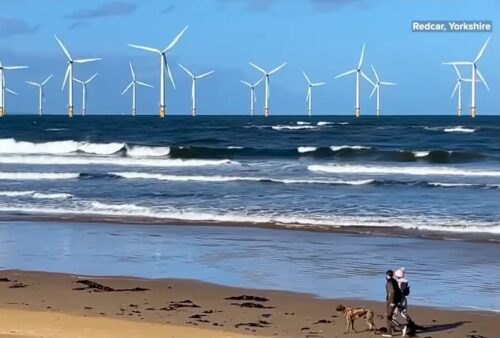














Unfortunately, last year the Farmer’s Almanac was predicting a cold and snowy east and here in Northern Maryland, we got a record dearth of snow….1″. The Old Farmer’s Almanac was much more accurate in predicting a mild winter in the east with very little snow. So, I’ll take this forecast with a grain of salt.
So the Farmer’s almanac looks at the sun and can more accurately predict the upcoming weather season better than all the sophisticated advanced computer models that use a trace gas (CO2) as the main driver for all weather related claims.
The Farmer’s Almanac has been incredibly accurate over the decades. It won’t forecast the weather on your block or even the city, but for your area of the Province or something that can realistically be expected for S. Ontario or Central Sk., they are darn good. The computer models that spit out what the enviro’s want is getting better, but I put far more faith in the Farmer’s Almanac for general weather. Sun activity and sunspots are the primary drivers of climate changes and the Almanac includes it/them in their general forecasts.
I beleive the Farmers Almanac is a better realiable source of weather prediction then is the NYT’s or CNN